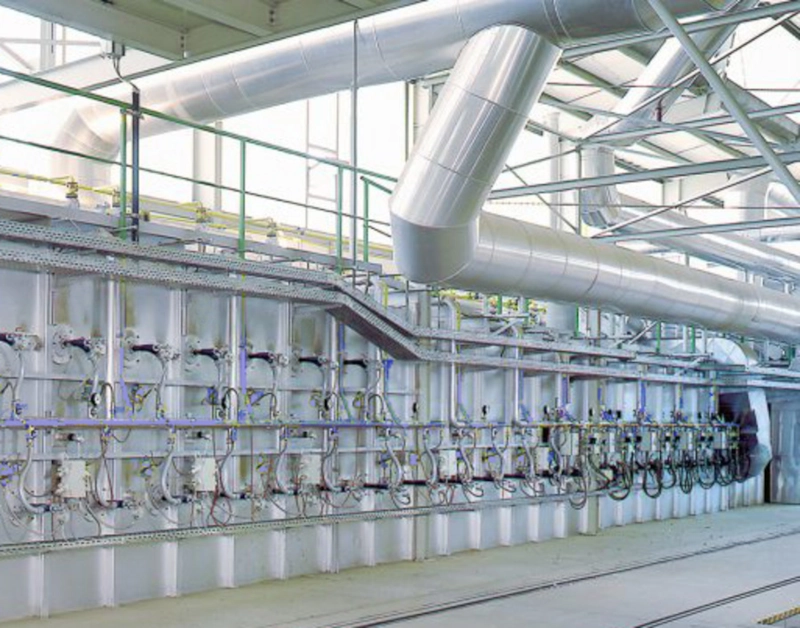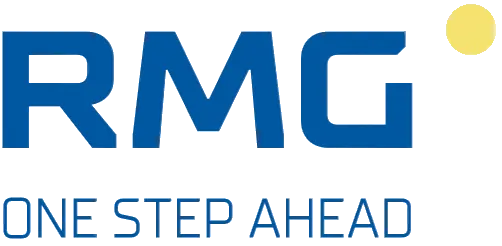Firing systems
Firing systems are technical systems that generate heat by burning suitable fuels. They are used in various areas, with the majority being used to heat buildings and water. While simple ovens and stoves used to be the most common, these have gradually been replaced by boilers and hot water heating systems. Today, oil and gas heating systems dominate the market, including gas boilers and energy-efficient condensing boilers. In order to reduce the use of fossil fuels, alternative systems such as pellet and wood chip heating systems are also becoming increasingly important.
Modern combustion systems are often equipped with controllable fans that enable precise control of the combustion process. This technology not only improves efficiency, but also supports condensing technology, which ensures optimum use of the fuel. With the integration of RMG's RGQ 5, combustion systems can now additionally analyze gas quality parameters such as calorific value, methane number and Wobbe index in real time. This data enables dynamic adjustment of the combustion process to the specific composition of the gas, which further increases efficiency and safety.
Systems without fans, such as atmospheric burners or natural draught burners, operate with a natural draught and are usually found in simpler applications. The integration of the RGQ 5 also offers advantages in such systems, as the precise determination of the gas quality improves the stability of combustion and reduces emissions.
Modern combustion systems are often equipped with controllable fans that enable precise control of the combustion process. This technology not only improves efficiency, but also supports condensing technology, which ensures optimum use of the fuel. With the integration of RMG's RGQ 5, combustion systems can now additionally analyze gas quality parameters such as calorific value, methane number and Wobbe index in real time. This data enables dynamic adjustment of the combustion process to the specific composition of the gas, which further increases efficiency and safety.
Systems without fans, such as atmospheric burners or natural draught burners, operate with a natural draught and are usually found in simpler applications. The integration of the RGQ 5 also offers advantages in such systems, as the precise determination of the gas quality improves the stability of combustion and reduces emissions.
Efficient & sustainable
Fuel diversity
Compact & space-saving
Minimized emissions
Safe & reliable
Low maintenance

Optimization of firing systems for industrial applications
In industrial applications, firing systems for gaseous fuels offer reliable and environmentally friendly heat generation that is ideal for flexible and demand-oriented energy supply. With the expansion of the gas network and the availability of natural gas in most locations, gas firing systems have established themselves as versatile solutions, particularly due to the advantages of clean combustion without ash formation and the elimination of fuel storage.
By integrating the RGQ 5, the functionality of industrial firing systems is significantly optimized. The RGQ 5 measures the gas quality precisely and enables continuous optimization of the fuel-air ratio. This is particularly important when using varying fuels such as liquid gas, biogas or mine gas, as their compositions often fluctuate. The RGQ 5 provides real-time data on critical parameters such as calorific value and Wobbe index, allowing combustion adjustments to be made more quickly and accurately. This ensures more stable combustion, lower emissions and greater energy efficiency.
The RGQ 5 contributes to safe and efficient system control, particularly for fuels with varying calorific values and components such as hydrogen sulphide, for example when using sewage gas or landfill gas. This minimizes the risk of corrosion and increases process reliability.
By integrating the RGQ 5, the functionality of industrial firing systems is significantly optimized. The RGQ 5 measures the gas quality precisely and enables continuous optimization of the fuel-air ratio. This is particularly important when using varying fuels such as liquid gas, biogas or mine gas, as their compositions often fluctuate. The RGQ 5 provides real-time data on critical parameters such as calorific value and Wobbe index, allowing combustion adjustments to be made more quickly and accurately. This ensures more stable combustion, lower emissions and greater energy efficiency.
The RGQ 5 contributes to safe and efficient system control, particularly for fuels with varying calorific values and components such as hydrogen sulphide, for example when using sewage gas or landfill gas. This minimizes the risk of corrosion and increases process reliability.
Efficient firing systems for low emissions and high performance
Firing systems are characterized by numerous technical features and advantages that enable efficient, safe and environmentally friendly combustion. A central component of such systems is the gas control system, also known as the gas ramp, which ensures safe and precise combustion in steam or hot water boilers. With the support of the RGQ 5, a continuous quality analysis is added to the gas control system. Fluctuations in the gas composition can be detected and compensated for at an early stage, ensuring that combustion conditions remain stable.
Gas burner systems are another important component and are designed differently depending on the output range. For smaller systems (up to 10 MW), monobloc burners with an integrated blower are common, while the blower is installed separately for larger systems. Larger systems rely on modulating burners, which offer precise control of the fuel/air ratio. With the RGQ 5, these controls can be even more precise, as the gas quality parameters are integrated directly into the control system.
O₂ control minimizes the residual oxygen content in the exhaust gas to around 2 %, which further improves efficiency. In combination with the gas quality analysis of the RGQ 5, CO control becomes even more effective, as the combustion process can be continuously adapted to the specific properties of the fuel. This significantly reduces exhaust gas emissions and energy consumption.
For larger burners, frequency control of the fan motor is standard in order to adjust the air flow efficiently. The RGQ 5 optimally complements these systems by analysing the gas quality and composition in real time, which leads to further optimization of the air supply and maximum energy yield.
Gas burner systems are another important component and are designed differently depending on the output range. For smaller systems (up to 10 MW), monobloc burners with an integrated blower are common, while the blower is installed separately for larger systems. Larger systems rely on modulating burners, which offer precise control of the fuel/air ratio. With the RGQ 5, these controls can be even more precise, as the gas quality parameters are integrated directly into the control system.
O₂ control minimizes the residual oxygen content in the exhaust gas to around 2 %, which further improves efficiency. In combination with the gas quality analysis of the RGQ 5, CO control becomes even more effective, as the combustion process can be continuously adapted to the specific properties of the fuel. This significantly reduces exhaust gas emissions and energy consumption.
For larger burners, frequency control of the fan motor is standard in order to adjust the air flow efficiently. The RGQ 5 optimally complements these systems by analysing the gas quality and composition in real time, which leads to further optimization of the air supply and maximum energy yield.
Important questions and answers about firing systems
Precise gas analysis is a central component of many industrial processes. It ensures safety, efficiency and compliance with legal requirements. In this section you will find technical answers about sensors, measuring methods and areas of application for modern gas analysis systems.
Do you have any questions about our
Firing systems
Feel free to contact us if you have any questions or need help. Our staff is always there for you.

